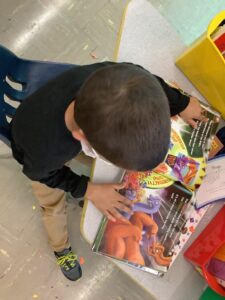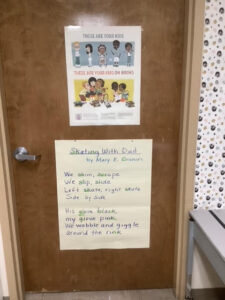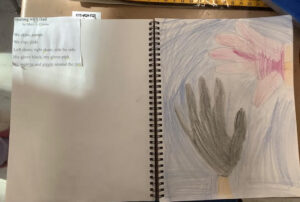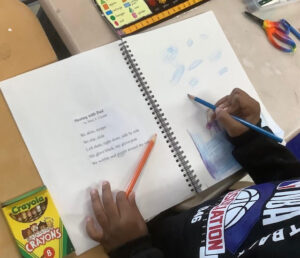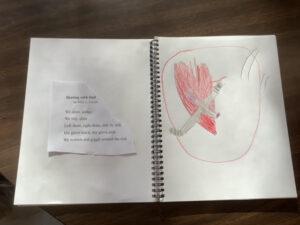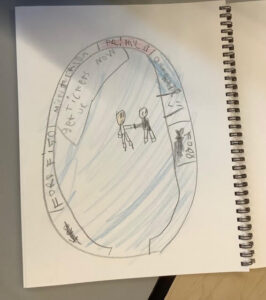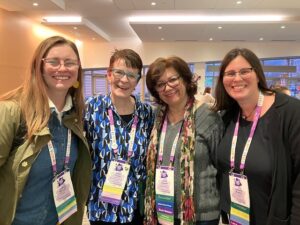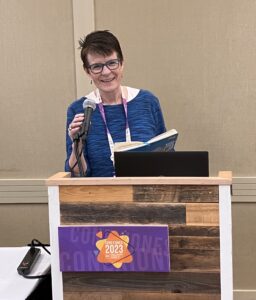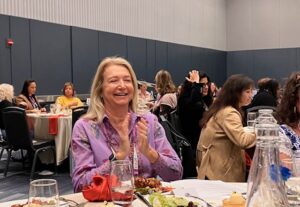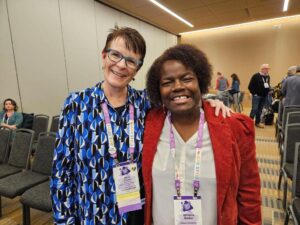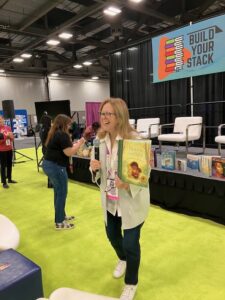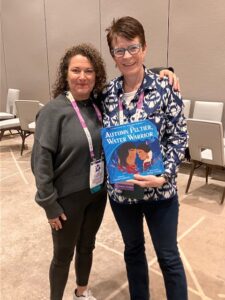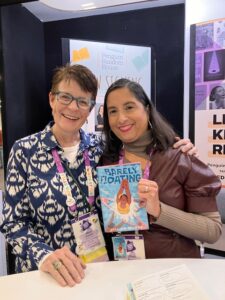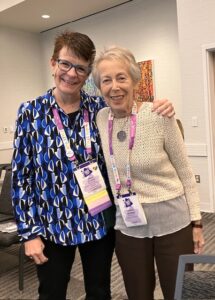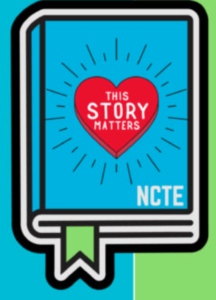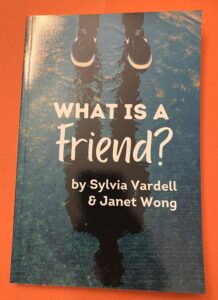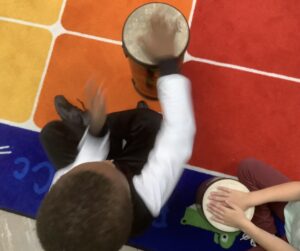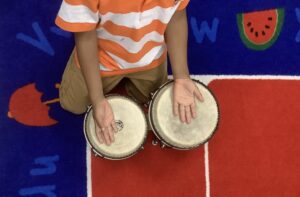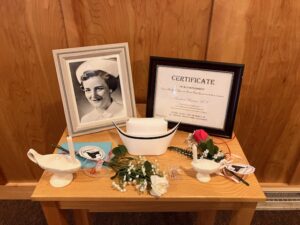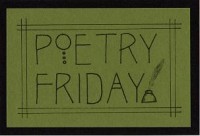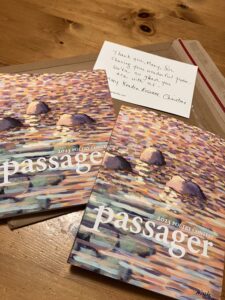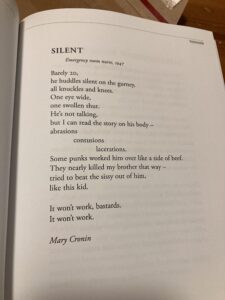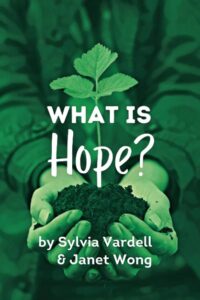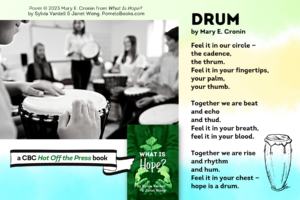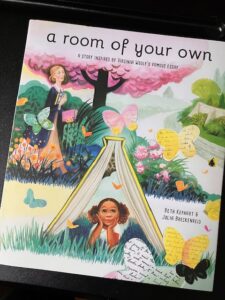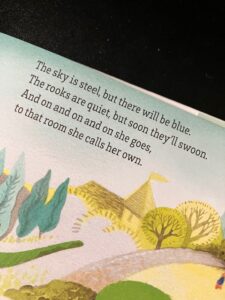As the school year was winding to a close, I had the delight of returning to P.S. 86 in the Bronx to lead a series of poetry workshops. I attended P.S. 86 as a young child.
The students were all-in– welcoming, and ready to have fun!
We talked about how every writer has obsessions, favorite things in their life that spark stories and poems and other forms of art. I shared some of mine. I encouraged them to tap into their favorite things, and use their “poetry microscopes” to notice the small details that make poems come alive.
After talking about hope in hard times, we got loud and drummed on tables to my poem “Drum,” from WHAT IS HOPE? (Pomelo Books, 2023).
We talked about noticing signs of nature in everyday moments in the city: a vine climbing up a building, a frisky squirrel, a swoop of sparrows. These are all images that appear in my poem “Glimpses of Green,” published in the amazing online children’s poetry journal Tyger, Tyger.* The students added their own examples of glimpses of the natural world (raccoons in the Bronx!) and they each illustrated the poem in their own way.
I treasure my visits to P.S. 86. The chance to go back and get to know the students in the Kingsbridge neighborhood of the Bronx brings me joy and was a great way to end the school year! Thank you, school librarian Matt Egan, for welcoming me back to P.S. 86!

*Tyger, Tyger editor Rachel Piercey recently sent out a blog post linking to a bunch of wonderful summer poems for kids– and “Glimpses of Green” is included!




